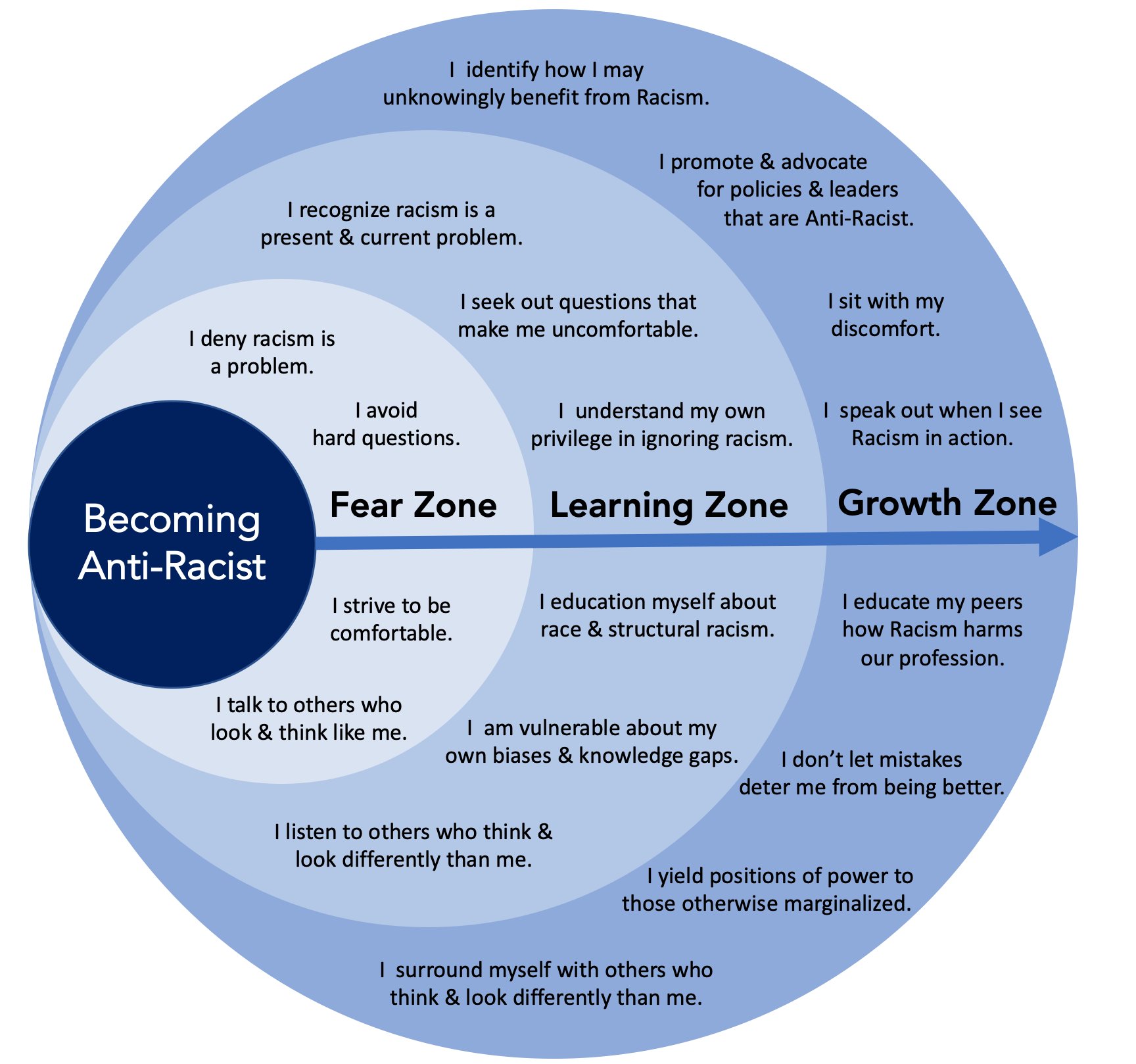- BY Raggi Kotak

Being non-racist is not enough
THANKS FOR READING
Older content is locked

A great deal of time and effort goes into producing the information on Free Movement, become a member of Free Movement to get unlimited access to all articles, and much, much more
TAKE FREE MOVEMENT FURTHER
By becoming a member of Free Movement, you not only support the hard-work that goes into maintaining the website, but get access to premium features;
- Single login for personal use
- FREE downloads of Free Movement ebooks
- Access to all Free Movement blog content
- Access to all our online training materials
- Access to our busy forums
- Downloadable CPD certificates
Table of Contents
ToggleRacism is the belief that one racial group is above another racial group. It is supported by structural power. Structural power shows up in different ways and ensures unequal distribution of resources through laws, policies and behaviours amongst racial groups, over a range of issues including education, employment opportunities, finances, criminal justice outcomes and healthcare.
Racism comes in two forms: overt (racial slurs etc) and covert (more subtle forms of racism such as microaggressions; for example, mistaking a Black barrister in court for the usher.
We have all been socialised and conditioned in the dynamics of racism. This happens to all of us at an early age – through our families, our education, the books we read, the films we watch and the advertising we see.
White people are repeatedly affirmed, made visible and represented in diverse and positive ways. Racialised people (Black, indigenous, people of colour etc) are represented in negative and stereotypical ways, if at all. For example, in 2018, the clothing retailer H&M had to apologise after an advertising campaign showed a Black child wearing a hooded sweatshirt saying “coolest monkey in the jungle”.
The psychology of racism
Our psychological processes help create the dynamics of racism. As social beings, we are wired to connect with those most like us. Our brains create shortcuts or assumptions based on what we already believe to be true. This is designed to help us process the large amount of information we encounter.
The problem is that when our brain creates assumptions, they are based on beliefs about different social groups rather than on their actual behaviours. These beliefs are often based on stereotypes. This is what creates unconscious biases.
Our emotional systems also help create the dynamics of racism. Our feelings are at the roots of our actions, whether we are aware of them or not. Feelings are contagious. We are designed to connect with each other and regulate each other emotionally. This means that both positive and negative emotions are transferred between us.
Our emotions can be manipulated. In August 2018, Boris Johnson equated Muslim women wearing a niqab to letterboxes. The following week, hate incidents against Muslims rose 375%.
In conversations about race, we react differently on an emotional level depending on our lived experience of racism. This creates confusion and misunderstanding. Those of us who are racialised may present with a higher level of knowledge; many have been speaking about racism at some level for much of our lives. Our emotions may include grief and anger.
White people may present with much lower awareness. Their emotions may include fear, guilt or shame. Immediately, when our emotional systems attempt to regulate, we will create dissonance as we are presenting with different levels of awareness and different emotions. This will help entrench feelings of difference amongst us.
Most of us will get racist thoughts from time to time. We might see a group of young Black men in hoodies, feel fear and check our bags. We might hear someone with a strong foreign accent giving submissions in court and tune out, thinking the submissions are going to be less valuable. Most of us will pretend that we don’t have these thoughts because it is deeply uncomfortable.
The majority of our communication is non-verbal and unconscious; others pick it up through a variety of methods such as tone of voice, eye contact and body language. (The percentages vary from 55% to 93% depending on what study you read.) This means that even though we try hard to hide these racist thoughts, they leak out of us through microaggressions or other unconscious behaviours.
What does it mean to be ‘anti-racist’?
Being anti-racist means being willing to act and intervene when we witness or experience racism. It is an active stance.
It is not enough to simply wring your hands and denounce racism, or to post on social media in support of Black Lives Matter. This is the behaviour of someone who is ‘non-racist’; someone who may be completely opposed to racism but merely takes a passive stance to prevent it.
For me, it is not enough to be non-racist – we have to be anti-racist. We have to be willing to take action to interrupt the dynamics of racism, wherever we see it. We have to commit.
Issues of racism have impacted me my whole life. I was born in 1968 – the year of Enoch Powell’s infamous ‘Rivers of Blood’ speech, which stirred up a huge amount of racial hatred. I grew up in a predominantly white area of North London. Racism was an everyday occurrence in my school days. I never knew where the next attack would come from. I just knew the next attack was coming soon.
Although thankfully these dynamics shifted, covert forms of racism have continued to impact on me. They have been prevalent throughout my legal career.
It is a relief to see so many of my colleagues stepping forward now demanding racial justice. But it saddens me that so many of us had to experience the brutal and horrific killing of George Floyd to call us so strongly to action. Especially when there have been so many previous killings of this type, in the UK as well as the US.
I believe that we are at a pivotal moment, where there is a real possibility of change. My call to you is not to waste this moment. Do not step back into comfort and familiarity, but be willing to courageously step forward as anti-racists – demanding change of yourselves, your communities and your organisations.
Taking action as an anti-racist
The actions will look different for all of us. We are all at different starting points of our journeys as anti-racists. We all have different styles and levels of comfort/discomfort. That is OK. The important thing is that we recognise that there is a problem and be willing to take action and then keep taking action.
I find the image below very helpful. As a South Asian woman, I have recently become much more aware of my conditioning around anti-Blackness. Racism against the Black communities is rife in the South Asian communities. I recognise that this is an area where I have to do some work. I have moved from the fear zone where, although I knew there was a problem, I did not really focus on it. I am now stepping between the learning and the growth zone, depending on the circumstances I find myself in. It is a constant journey of discovery.

What actions can you take? What gets in your way?
